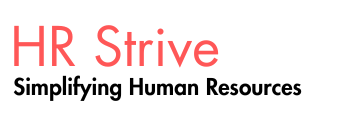Whether it's an impromptu chat in a hallway with a stakeholder or a thoroughly orchestrated initiative like introducing a new performance management system across the organization, HR professionals can apply the same foundational knowledge, skills, and abilities in both scenarios.
Applying HR Competencies
By leveraging various HR competencies, an assistant HR director in a public school system managed to balance institutional priorities with employee concerns. New hires often needed reminders that the primary mission of the district centered on students, while staff needs, though important, were secondary. In one case, a newly hired teacher requested a two-week leave early in the academic year to go on her honeymoon.
Although the HR professional empathized with her situation, she had to explain why the leave could not be granted. The presence of a substitute for that length of time, especially so early in the term, could hinder the children’s learning and emotional stability—particularly given their young age and need for consistent care.
Complicating matters further, the district's educators were unionized. The HR leader wanted to preserve a positive relationship with the union while still protecting student interests.
The real challenge lay in conveying the rationale in a way that encouraged the teacher to understand the wider implications—how the absence would affect her students, frustrate parents, and shift responsibilities onto her colleagues. Ideally, this would lead her to reconsider without escalating the issue into a union grievance.
After an open and respectful conversation, they reached a compromise. The teacher was approved for an extended weekend for her wedding and would postpone the honeymoon until the summer break.
Thanks to the HR professional’s strengths in Communication, Leadership and Navigation, and Relationship Management, the issue was resolved constructively, and trust was maintained between all parties involved.
Understanding the Communication Model
Exhibit 20 highlights the potential barriers that can disrupt communication, regardless of whether it’s verbal, written, or nonverbal:
Exhibit 20: Communication Flow
Who → says what → in what way → to whom
Communicator → Message → Medium → Receiver
Noise at each stage
→ With what effect? → Feedback
At every stage of this communication chain, disruptions—referred to as "noise"—can occur, undermining the message:
-
Sender to Message: The communicator might struggle to express the intended message clearly.
-
The message might reach the wrong recipient.
-
The content might be unclear, incomplete, or irrelevant to the receiver.
-
Attempts to sound confident may come across as arrogance.
-
The message might assume background knowledge the receiver lacks.
-
Message to Medium: The delivery method could be poorly chosen. An email may be sent too far in advance and forgotten, or lost in a flood of unread messages. Formatting errors or typos may reduce credibility. Online meeting participants may struggle to follow complex information.
-
Medium to Receiver: Distractions, noise, or discomfort may interfere with understanding. Language barriers or differing expectations can further confuse the message.
-
Receiver to Sender: The feedback loop may be weak or missing altogether. There might be no Q&A, or the sender may not respond to replies, leaving misunderstandings unresolved.
To reduce these disruptions, HR professionals must verify whether the message was received and understood—for example, by encouraging questions or checking comprehension. Reflecting on their own communication style also helps: Was the timing right? Was the format appropriate? Did the audience know how to ask follow-up questions?
The core idea in this model is that communication can break down at multiple points due to physical, emotional, or contextual "noise." Skilled communicators proactively plan for these issues to ensure their message is clearly received and understood.

No comments:
Post a Comment